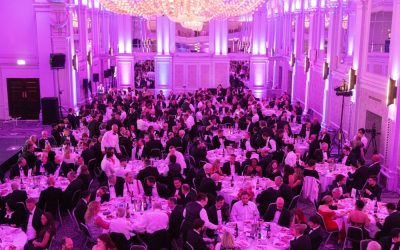The Royal Institution of Naval Architects’ (RINA) Technical Conference on Managing CII and Associated Challenges began today at the International Maritime Organization’s Headquarters in London.
The conference, the first of its kind organised by RINA, provided a comprehensive exploration of Carbon Intensity Indicators (CII) and the profound impact the rating system will have on the maritime industry and its pursuit of environmental sustainability. The inaugural day of showcased a range of insightful case studies to innovative solutions and cutting-edge technologies.
The CII rating system, design by the IMO, officially came into force on January 1st, 2023. CII is defined as a measure of a ship’s efficiency in transporting goods or passengers, expressed in grams of CO2 emitted per cargo-carrying capacity and nautical mile. The mandatory measure under MARPOL Annex VI affects all cargo, ro-pax and cruise vessels above 5,000 gross tonnage (GT) that trade internationally.
Chris Boyd, RINA CEO, delivered the welcome address, setting the stage for the conference’s focus on managing carbon intensity in naval architecture. Keynote speaker Tianbing Huang, Deputy Director at the International Maritime Organization (IMO) Marine Environment Division emphasised the urgent need to address environmental challenges in maritime operations.
The day featured various sessions on CII and its rating scheme. Oliwia Gałecka from Ardmore Shipping presented a case study on using voyage optimization techniques to improve a vessel’s CII rating. Cesare d’Api explored the tangible impact of CII on the d’Amico Fleet, providing practical insights for ship operators.
Fotis Papadopoulos of MSC Cruise Management discussed managing CII through itinerary optimisation, showcasing the industry’s proactive approach to sustainable voyage planning. Presentations also looked further ahead, with Volker Bertram exploring decarbonising bulk carriers by 2030 and 2050, and Frederik Gerhardt investigating wind propulsion for tankers as innovative solutions to reduce CII.
The afternoon sessions focused on cutting-edge technologies and practices. Yigit Demirel presented a thesis on the paradigm shift in energy efficiency measures with silicone-based low friction coatings, while Tor Mikal Østervold addressed the ‘missing link’ in environmental considerations by quantifying the effect of biofouling on vessel performance.
Eirini Arvanitaki and Uwe Altenbach provided intricate details on hull and propeller performance, as well as correction factors for CII calculations, showcasing the industry’s commitment to precision in addressing the issue of how to adapt vessel designs.
The day concluded with a general discussion moderated by Tom Strang from Carnival Corporation & PLC to collectively address the challenges and opportunities associated with CII.
Looking ahead, the second day promises an equally compelling schedule with presentations covering diverse topics, including cruise ships, ice class vessels, and further exploration of wind propulsion. Additionally, participants will be taking part in a workshop, providing an opportunity to delve deeper into the intricacies of managing CII on a more granular level.
The conference serves as a crucial platform for collaboration and knowledge exchange, bringing together experts from across the maritime industry to collectively shape the future of practices in the sector in an environmentally conscious era.






